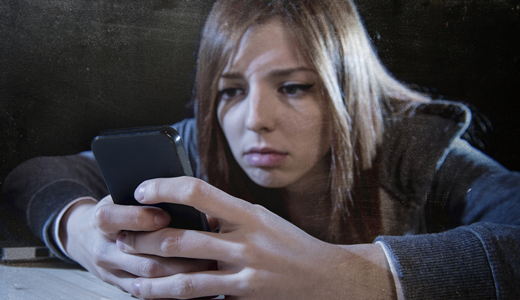Fourteen-year-old Hannah Smith lived in Leicestershire, England. Fifteen-year-old Natalie Natividad lived in a little town called Hebbronville, Texas. Neither girl knew of the other, but they had a few things in common.
For one, they were both bombarded with hurtful messages online, some saying nasty things about the way the girls looked, others going so far as to declare, “you should kill yourself!” In fact, the girls were cyberbullied and harassed so brutally that both Hannah and Natalie took their own lives—one in 2013 and the other in 2016.
Oh, and they both had one other thing in common: much of that anonymous online bullying that they endured … they did to themselves.
It’s being called “digital self-harm.” And before Hannah’s 2013 suicide, it wasn’t really known to be a thing. But after bullying experts at Florida Atlantic University started studying the possibilities they quickly came to realize that it wasn’t as rare as they thought.
“We knew we had to study this empirically,” said Sameer Hinduja, Ph.D., study author, professor in FAU’s School of Criminology and Criminal Justice in the College for Design and Social Inquiry, and co-director of the Cyberbullying Research Center. “And I was stunned to discover that about one in 20 middle- and high-school-age students have bullied themselves online. This finding was totally unexpected, even though I’ve been studying cyberbullying for almost 15 years.”
The findings, published in the Journal of Adolescent Health, were gleaned from interviews with some 5,593 American middle- and high school students between the ages of 12 and 17. It determined that about 6% of those kids had cyberbullied themselves, anonymously posting negative comments about themselves via fake accounts on Instagram, Snapchat and Facebook. Half of that group said they did it once, about 35% said they did it a few times and 13% said they had done it many times.
Now, why in the world would you troll and torment yourself online?
Well, the answer to that question can be a bit illusive. Some have suggested that it’s the digital equivalent to kids who physically cut or harm themselves as an extension of an emotional anguish that they’re going through. “There’s that same phenomena that’s going on; it’s akin to physically wanting to feel pain,” said Patricia Cavazos, an associate professor of psychiatry at the Washington University School of Medicine. About 8% of children ages 7-16 surveyed in a 2012 study said they’d engaged physical self-harm, or non-suicidal self-injury. And there is a growing body of evidence that suggests social media plays a role in increasing mental health issues among young people, Cavazos said.
In the FAU study, boys were more likely to say they bullied themselves online as a joke or to get attention. Girls, on the other hand, often said they did it because they were struggling with depression or were feeling psychologically distressed. Layered on top of that, teens who identified as “non-heterosexual” were three times more likely to bully themselves online, while kids who had already been victims of cyberbullying were 12 times more likely to cyberbully themselves.
Whatever their reasons, the research appeared to show that self-harmers were many times looking for a response of either encouragement or validation from others. And study author Hinduja said he hopes that research into digital self-harm will open up more dialogue about the issue on a number of fronts. “We need to closely look at the possibility that digital self-harm behaviors might precede suicide attempts,” said Hinduja. “We need to refrain from demonizing those who bully, and come to terms with the troubling fact that in certain cases the aggressor and target may be one and the same.”
Hopefully, as a larger number of educators, researchers and, yes, even parents start talking more about this problem, we will discover more ways that kids can find an avenue to communicate their feelings and seek out the help that they need without having to kick themselves in the digital shin.






Recent Comments